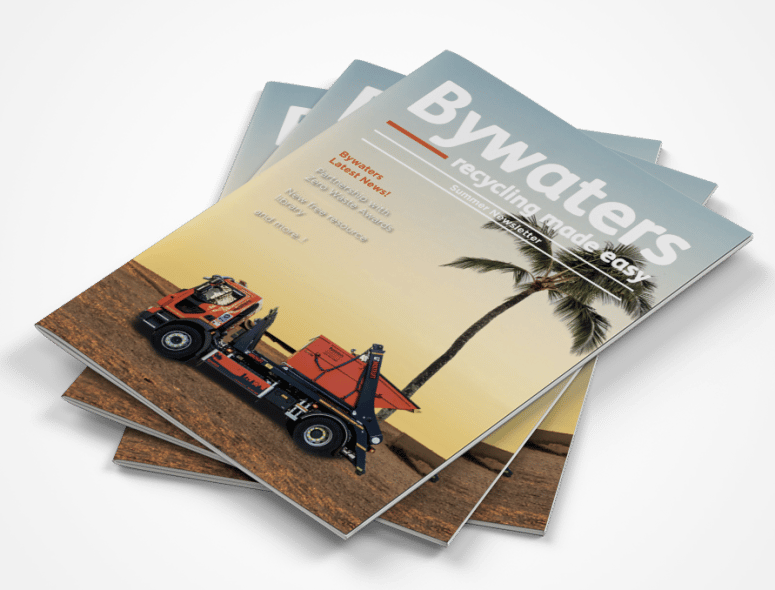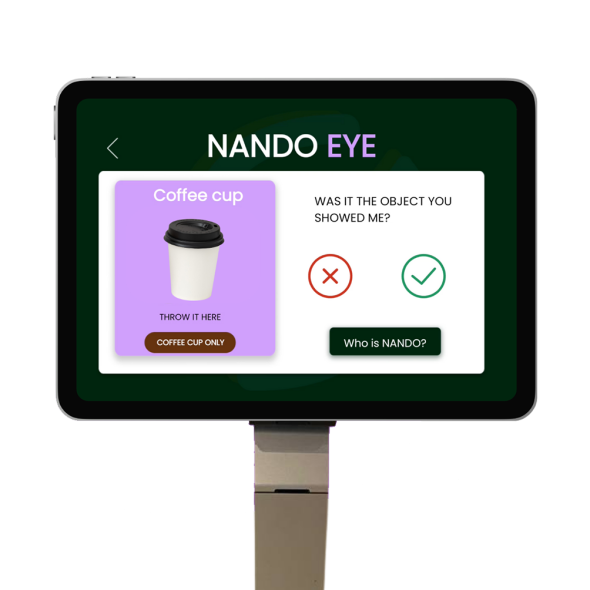| Coffee. The elixir of life. It’s fair to say that most of us absolutely love it and rely on it most days, and without coffee, we’d wager that a lot less would get done. As we return to the office after over a year of working from home and the days of quickly slipping out of bed for a Zoom call are not so frequent, coffee is more crucial than ever. Unfortunately, from its production and delivery methods to the takeaway cups we drink it in, it’s not necessarily the most eco-friendly beverage. Our mission here at Bywaters is to make sustainability as simple and accessible as possible for everyone, so we’ve compiled the following tips to make your morning brew as harmless to the environment as possible. Whether you’re an office dweller, home-based coffee consumer, busy commuter, or business trying to do better for the sake of our beloved planet, this guide will give you sustainable ways of drinking the liquid gold without tarnishing its beautiful taste. |
Purchase sustainable coffee beans
The biggest impact on the environment when it comes to your brew lies in the process of harvesting, preparing and transporting the beans in the first place. This is why the best sustainable coffee machines are the ones that require the smallest number of beans per cup. However, you can still source your coffee in an eco-friendly way. So, what is sustainable coffee? Without going too much into a geography lesson, as you probably know, coffee is almost exclusively grown in tropical regions. As these places are graced with some of the most important forests for our planet, farmers often expand their coffee plantations by chopping down these trees (in other words, deforestation). The process of growing coffee requires huge amounts of water, and unfortunately, due to its delicate nature, it can easily cause erosion and contaminated river streams. Instead, try to purchase coffee from companies and retailers who are dedicated to fair trade, which involves doing your research rather than picking up the first bag you see. Also, pay attention to the packaging — zero waste is always better, of course, but if you can’t find any, choose sustainable coffee packaging. For example, go for paper over plastic. |
Choose the correct coffee machine
There are two main paradigms when it comes to the caffeinated beverage: the instant coffee drinkers and the espresso lovers. If you’re one of the former, you’d be happy to know that your preferred coffee-making method is already relatively sustainable, as instant coffee has the smallest carbon footprint of all types. However, if you follow the espresso approach, it gets a little more complicated. When it comes down to it, you either have a coffee machine of some sort, or you frequent your local coffee shop. At best, the latter is not only an expensive habit, it’s also less sustainable. Firstly, paper cups are an environmental nightmare. 2.5 billion coffee cups are thrown away each year in the UK alone, while only 1 in 400 get recycled. Of course, you can invest in multi-use, sustainable coffee cups, however, this requires a lot of coordination. In reality, no one is so perfect that they’ll have their KeepCup with them every single time they might pass a coffee shop. What’s more, according to research by the University of Bath, the energy required to produce barista espresso makes it far less eco-friendly than most alternatives, including a home brew using coffee pods, believe it or not! Of course, this does not mean you should say bye-bye to your local café forever. But we do recommend investing in a good, environmentally-friendly coffee machine to avoid both the cost and the waste. |
Consider manual brewing
If espresso is not really your thing, but you’re also not a big fan of mixing ground coffee with water and calling it a day, don’t fret. There are a number of manual brewing methods that will give you the flavour you’re searching for while dodging avoidable harm to the planet due to the electricity and waste involved in other coffee making approaches. Often mixed with drip coffee, the pour-over method is perhaps the most impressive-looking way to make java. It’s usually less wasteful than a drip, and it’s known for precise and efficient extraction — capable of getting more out of your beans. Another charming approach is the beloved French press, which uses boiling water to create exceptionally strong and rich coffee. If you prefer a finer grind of beans, an Aeropress can be a good alternative to the French press — it also makes exactly one cup of coffee directly into your mug, which helps prevent waste. A Moka pot or a Bialetti does not require a filter, but uses the electricity from a hob. However, it creates a very similar flavour to espresso, which might be useful if you want to avoid the expense of an espresso maker and stay eco-friendly. For those who have a taste for thick coffee, a Turkish coffee pot also uses a hob and no filter (meaning less waste) — and is especially good if you add a cinnamon stick or cardamom pod. If a cold cup of coffee is your preference, instead of using unnecessary electricity to make it only to cool it down, consider investing in a cold brew maker. This nifty method takes time, but allows you to make coffee sustainably with no electricity, which you can then keep in the fridge and consume at your own pace, avoiding waste. |
Invest in reusable coffee pods
Assuming you’re an espresso lover, you either have or are ready to invest in a compatible machine. And if you’re leading a sustainable coffee initiative at work, an espresso machine is probably your best option. As previously stated, a regular, barista-style maker can take up a lot of energy for a simple cup of coffee — the moderately busy barista machine uses roughly 10,000 kWh per year — not to mention the mess and the potential investment in a grinder as well as the machine itself. It’s clear why capsule-based coffee machines have become increasingly popular, with over 4.8 million Brits opting for a Nespresso. They’re great because they require less beans in comparison, however, one-use pods can still have a detrimental effect on the environment. Luckily, there are some great alternatives. In the study from the University of Bath, aluminium pods were found to be the most sustainable out of the disposable options on the market. Whatever you choose though, plastic capsules are the worst, so try to avoid them. That being said, even the relatively sustainable aluminium ones still create waste, even if it’s recyclable, and require quite rigorous cleaning before you can chuck them into your recycling bin. Instead, switch to reusable capsules. This won’t only protect the planet, but will also allow you to use any ground coffee you’d like, which is important for a connoisseur. They’re extremely easy to use — fill up your reusable pod, treat it like you would any regular capsule, then rinse and repeat. |
Opt for a single-serve creamer alternative
Many of us don’t really enjoy a cup of java black. One common solution is creamer, particularly those single-serve creamer pods, as they are less wasteful (as you use just as much as you need without worrying about the rest going out of date) and more convenient. Sadly, they’re not a perfect fix, as they usually come in plastic wrapping. It’s worth considering a full bag of creamer if you drink enough coffee to warrant it. There are some great substitutes that take this into account. For example, non-dairy creamers have a longer shelf-life so can solve that problem. This vegan option is much more sustainable, as the meat and dairy industries fail to be eco-friendly. You could also make your own, which may take a little more time, but can be stored in a jar and refilled. And, if you like your coffee with milk and sugar, there are some interesting concepts being developed, like these pods that avoid any waste whatsoever as they do not require any packaging. |
Notice what filters you’re using
Filters are not usually something we pay too much attention to. They’re made out of paper, right? Although this is true, it’s not the whole story, and they are actually a real environmental hazard. Most paper filters are bleached, which means that when they inevitably end up in a landfill, they seep dioxins — toxic chemicals — into watersheds. This in turn affects our flora. To ensure you’re bypassing this awful yet avoidable side effect of filters, look for ones that are labelled with TCF (total chlorine-free) or PCF (processed chlorine-free). Though, this does still mean there will be some waste incurred. Your best bet is to consider using a method that does not require any filters in the first place, or opt for one of the many metal reusable types on the market. Some coffee connoisseurs even prefer the taste the metal gives compared to paper, so the investment might be worth it on both levels. So, there you go. Now you can enjoy your coffee while knowing you’re doing everything you can to keep it sustainable. Whatever you do, don’t forget to recycle any waste! |


